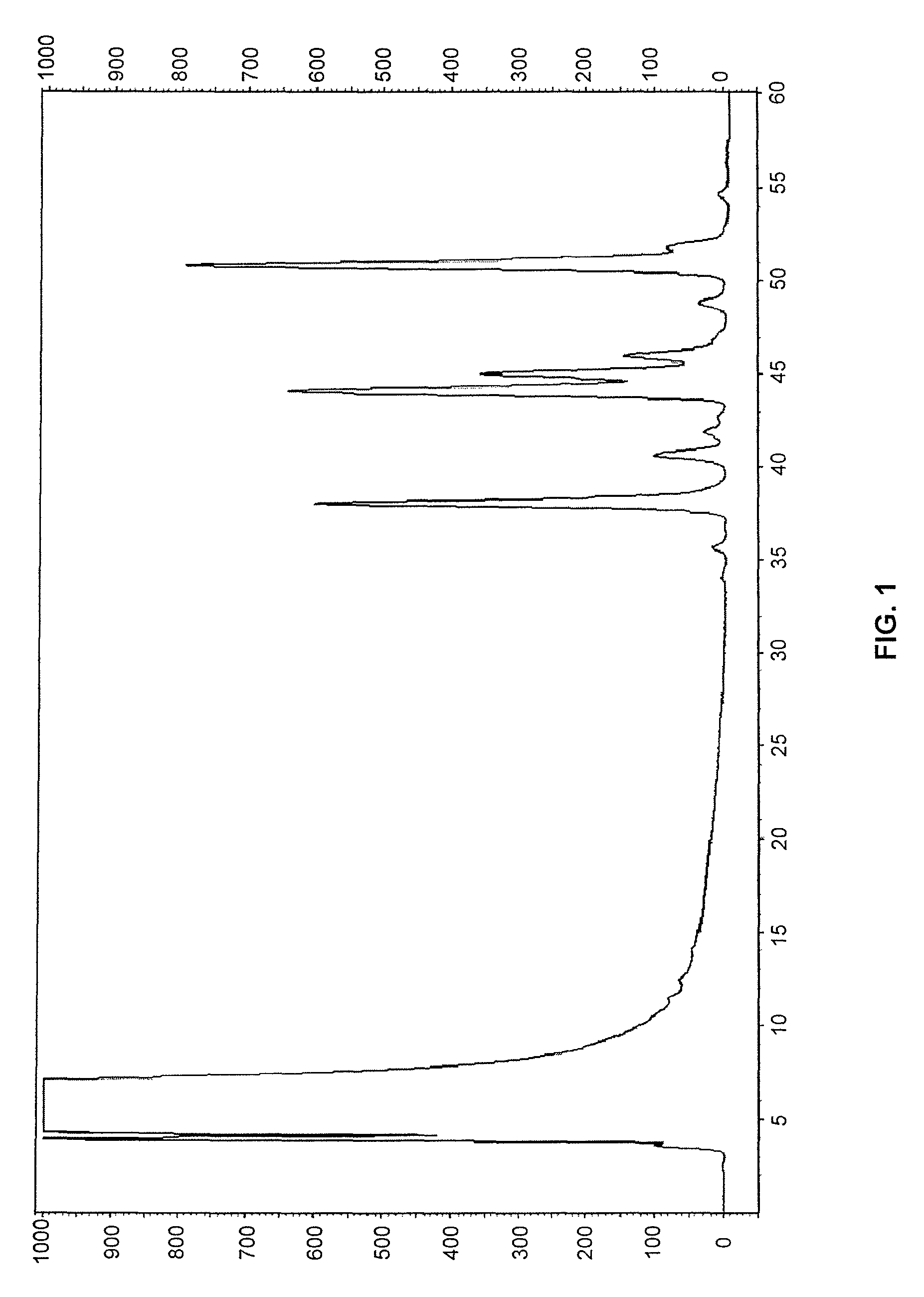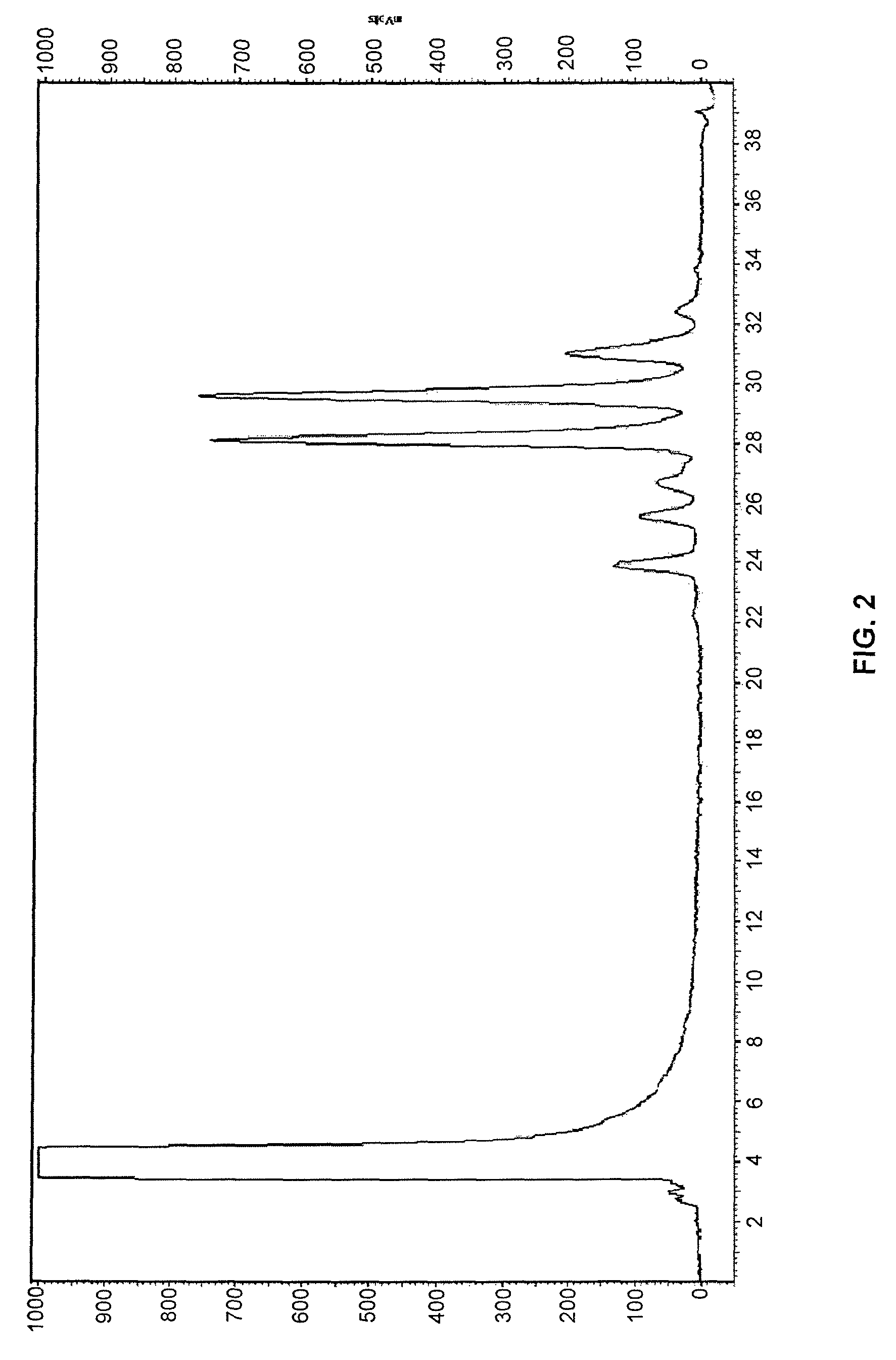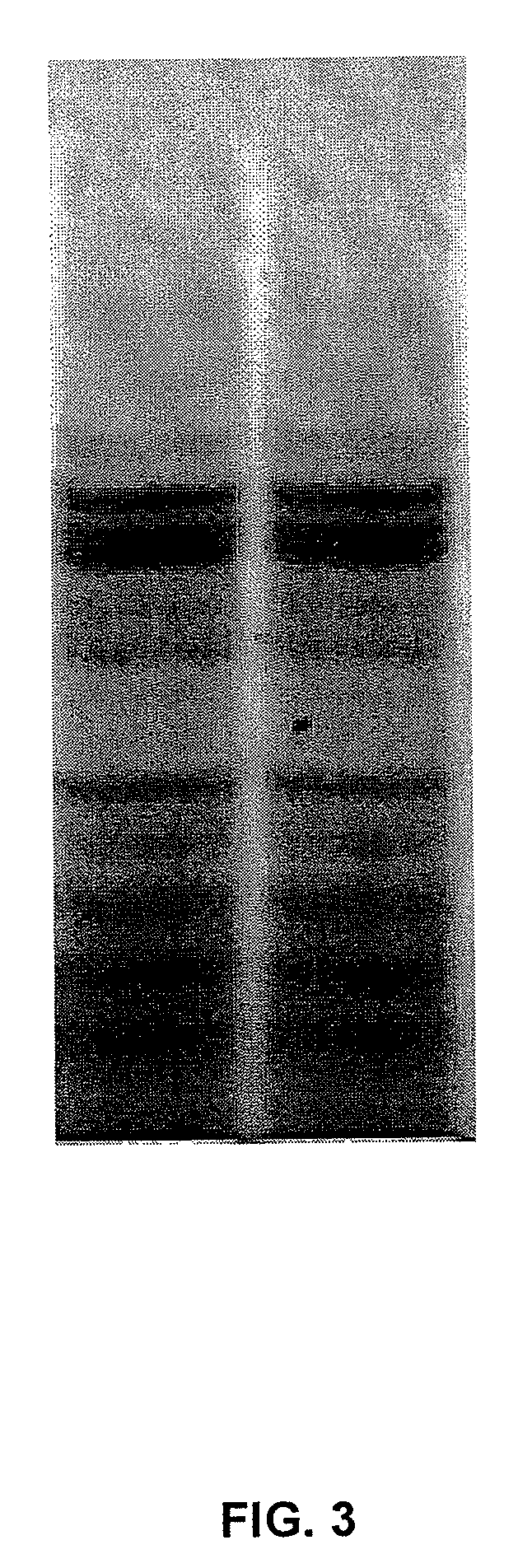Compounds and methods for rapid labeling of N-glycans
a technology of nglycans and compounds, applied in the field of compound and method for rapid labeling of nglycans, can solve the problems of labile constituents and partial degradation of biologically important, and achieve the effects of rapid and facile labeling of n-glycans, and easy preparation
- Summary
- Abstract
- Description
- Claims
- Application Information
AI Technical Summary
Benefits of technology
Problems solved by technology
Method used
Image
Examples
example 1
Synthesis of 4-aminobenzoyl-N-hydroxysuccinimidyl carbamate (4-AASC)
[0137]
[0138]The example illustrates the synthesis of a derivative of 4-aminobenzoic acid, 4-aminobenzoyl-N-hydroxysuccinimidyl carbamate (3).
[0139]Compound 3 (4-AASC) was prepared based on a modified protocol developed for the synthesis of 6-aminoquinolyl-N-hydroxysuccinimidyl carbamate (Cohen et al. Analytical Biochemistry 211, 279-287, 1993). Di(N-succinimidyl) carbonate 2 (DSC, 6 mmol, 1.5 g) was dissolved in 50 ml of anhydrous acetonitrile and heated to reflux. 4-aminobenzoic acid 1 (4-AA, 5 mmol, 0.686 g) was dissolved in 25 ml of anhydrous acetonitrile and gradually added to the refluxing carbonate solution. The reaction was kept under reflux for 1 h. After 1 h, ˜⅓ volume of acetonitrile was allowed to evaporate, the resulting solution was cooled to −20° C. and left for several days. The resulting precipitate was filtered and washed with cold acetonitrile. Compound 3 isolated (yield>85%) was dried in vacuum an...
example 2
Synthesis of 3-aminobenzoyl-N-hydroxysuccinimidyl carbamate
[0140]Compound 3-aminobenzoyl-N-hydroxysuccinimidyl carbamate was prepared according to the procedures shown in Example 1 by reacting 3-aminobenzoic acid (CAS registry No.: 99-05-8) with di(N-succinimidyl) carbonate.
example 3
Synthesis of 8-aminonaphthalene-1,3,6-trisulfonic acid-N-hydroxysuccimidyl carbamate
[0141]
[0142]Compound 8-aminonaphthalene-1,3,6-trisulfonic acid-N-hydroxysuccimidyl carbamate (5) is prepared using the similar procedure as illustrated in Example 1. Di(N-succinimidyl) carbonate 2 (DSC, 6 mmol, 1.5 g) is dissolved in 50 ml of anhydrous acetonitrile and heated to reflux. 8-aminonaphthalene-1,3,6-trisulfonic acid 4 (ANTS, 5 mmol, 1.92 g) is dissolved in 30 ml of anhydrous acetonitrile and gradually added to the refluxing carbonate solution. The reaction is kept under reflux for 1 h. After 1 h, ˜⅓ volume of acetonitrile is allowed to evaporate, the resulting solution is cooled to −20° C. and left for several days. The resulting precipitate is filtered and washed with cold acetonitrile. Compound 5 isolated is dried in vacuum and stored in a desiccator at room temperature. The yield is greater than 80%.
PUM
| Property | Measurement | Unit |
|---|---|---|
| temperatures | aaaaa | aaaaa |
| pH | aaaaa | aaaaa |
| boiling point | aaaaa | aaaaa |
Abstract
Description
Claims
Application Information
 Login to View More
Login to View More - R&D
- Intellectual Property
- Life Sciences
- Materials
- Tech Scout
- Unparalleled Data Quality
- Higher Quality Content
- 60% Fewer Hallucinations
Browse by: Latest US Patents, China's latest patents, Technical Efficacy Thesaurus, Application Domain, Technology Topic, Popular Technical Reports.
© 2025 PatSnap. All rights reserved.Legal|Privacy policy|Modern Slavery Act Transparency Statement|Sitemap|About US| Contact US: help@patsnap.com



